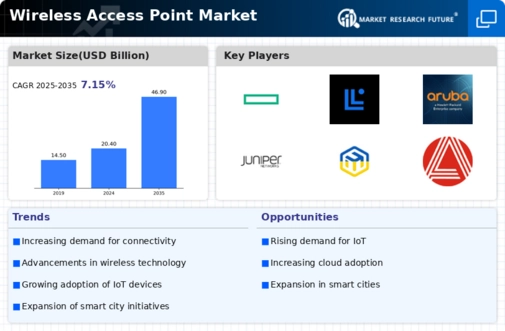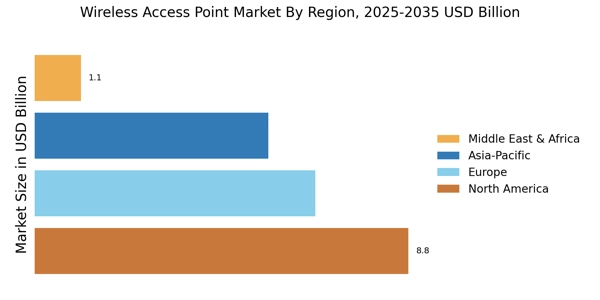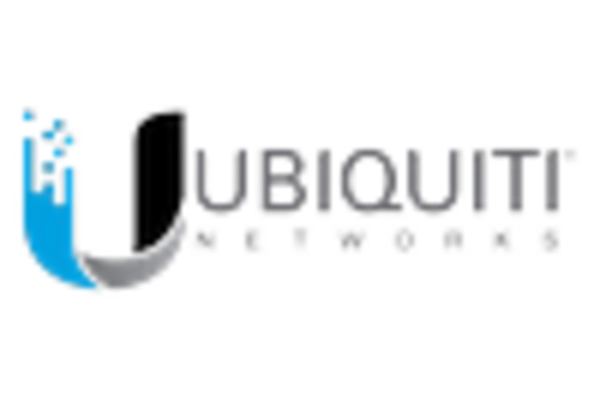North America : Technology Adoption Leader
North America is the largest market for wireless access points, holding approximately 40% of the global market share. The region's growth is driven by increasing demand for high-speed internet, the proliferation of IoT devices, and the expansion of smart cities. Regulatory support for broadband initiatives further catalyzes market growth, with significant investments in infrastructure. The U.S. leads this market, followed closely by Canada, which contributes around 15% to the overall market share.
The competitive landscape in North America is dominated by key players such as Cisco Systems, Aruba Networks, and Ubiquiti Networks. These companies are at the forefront of innovation, offering advanced solutions tailored to various sectors, including education, healthcare, and enterprise. The presence of established firms ensures a robust supply chain and fosters a competitive environment, driving continuous improvements in technology and service delivery.
Europe : Emerging Market Dynamics
Europe is witnessing significant growth in the wireless access point market, accounting for approximately 30% of the global share. The region's expansion is fueled by increasing digitalization, the rise of remote work, and regulatory frameworks promoting connectivity. The European Union's initiatives to enhance broadband access across member states are pivotal in driving demand. Germany and the UK are the largest markets, together representing about 20% of the European market share, with strong investments in 5G technology and smart infrastructure.
Leading countries in Europe include Germany, the UK, and France, with a competitive landscape featuring major players like Cisco, Aruba Networks, and TP-Link. The market is characterized by a mix of established companies and emerging startups, fostering innovation and diverse product offerings. The presence of regulatory bodies ensures compliance and encourages investment in advanced wireless technologies, enhancing overall market growth.
Asia-Pacific : Rapidly Growing Market
Asia-Pacific is rapidly emerging as a significant player in the wireless access point market, holding around 25% of the global share. The region's growth is driven by urbanization, increasing smartphone penetration, and the expansion of e-commerce. Countries like China and India are leading this growth, with China alone accounting for nearly 15% of the market. Government initiatives to improve digital infrastructure and connectivity are also key drivers, fostering a conducive environment for market expansion.
The competitive landscape in Asia-Pacific features a mix of local and international players, including Huawei Technologies, TP-Link, and Netgear. The presence of these companies ensures a diverse range of products catering to various consumer needs. Additionally, the region's focus on technological advancements and smart city projects is expected to further boost demand for wireless access points, making it a vibrant market for future investments.
Middle East and Africa : Emerging Connectivity Solutions
The Middle East and Africa region is witnessing a gradual increase in the wireless access point market, holding approximately 5% of the global share. The growth is primarily driven by the need for improved connectivity in urban areas and ongoing investments in telecommunications infrastructure. Countries like South Africa and the UAE are leading this market, with significant government initiatives aimed at enhancing digital access and promoting smart city developments. The region's market is expected to grow as more businesses and consumers demand reliable internet access.
In this region, the competitive landscape is characterized by a mix of local and international players, including D-Link and Extreme Networks. The presence of these companies is crucial for addressing the unique challenges of the market, such as varying levels of infrastructure development. As the region continues to invest in technology and connectivity, the demand for wireless access points is anticipated to rise, creating opportunities for growth and innovation.


















Leave a Comment